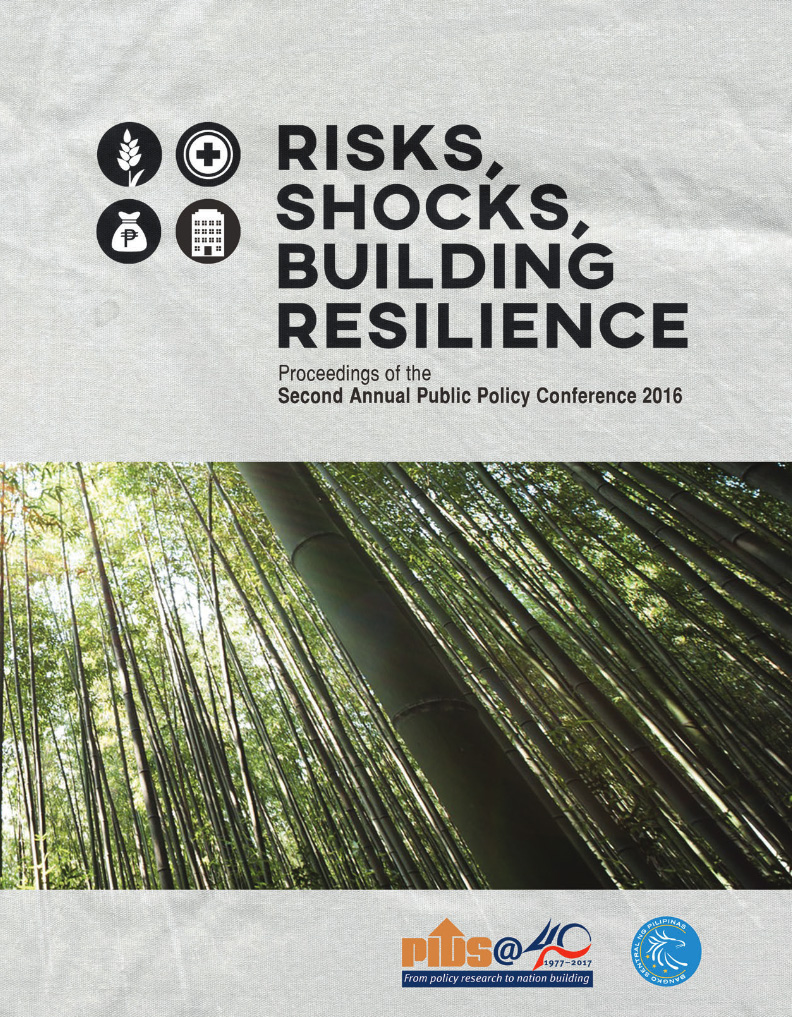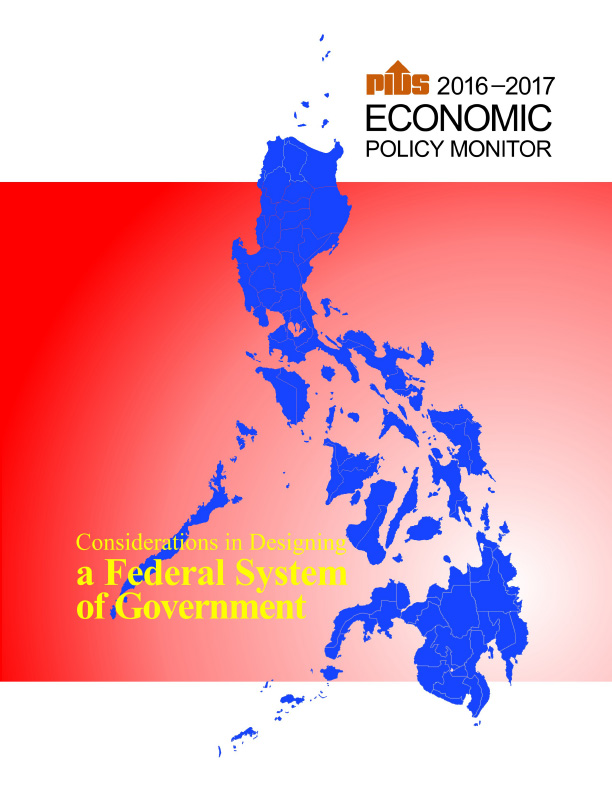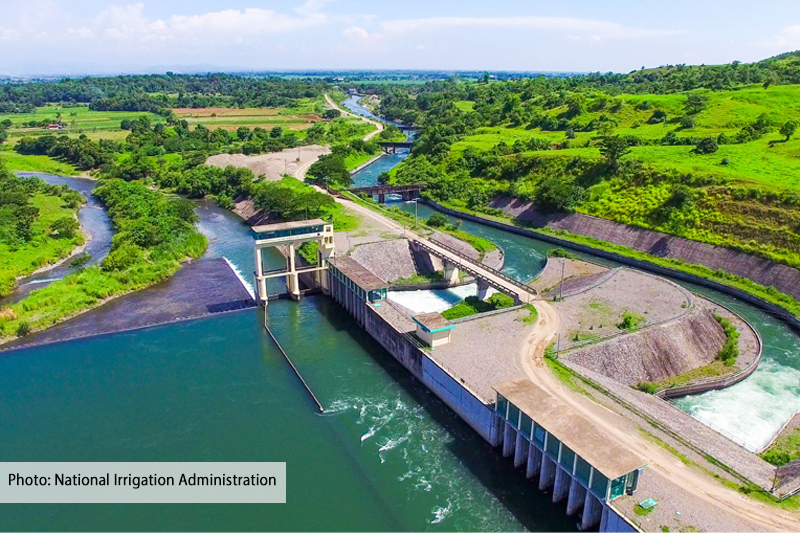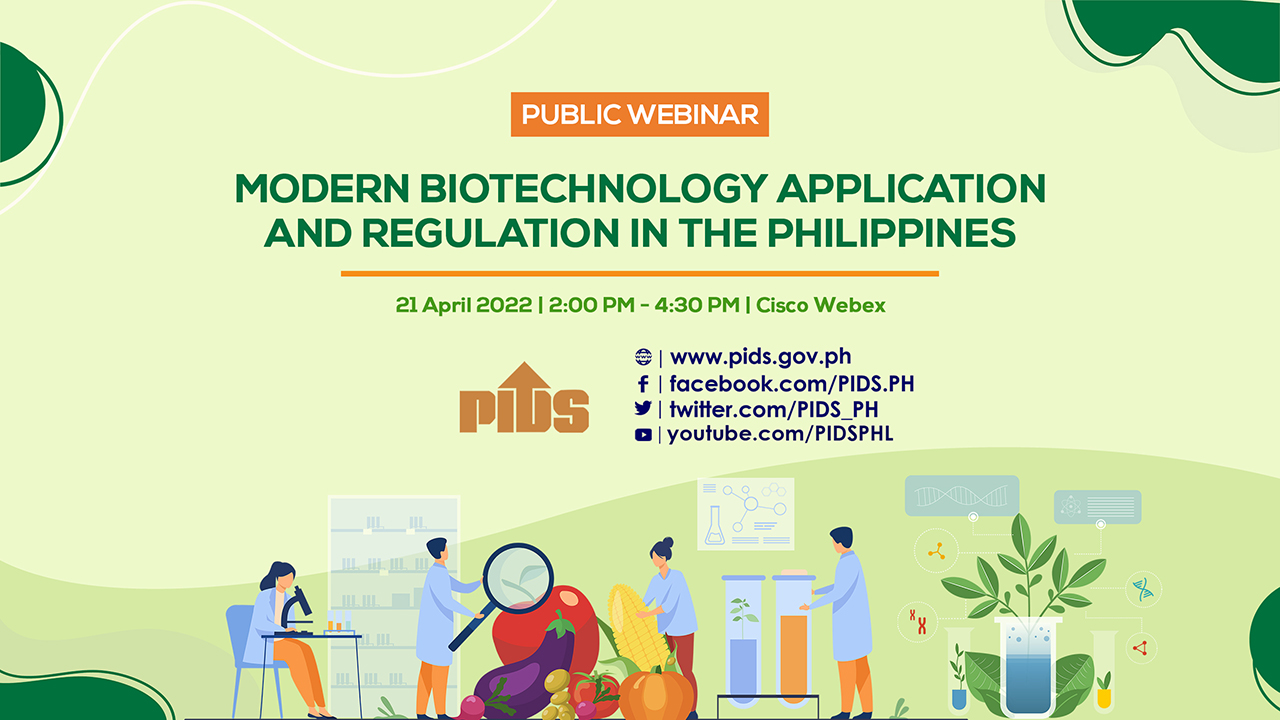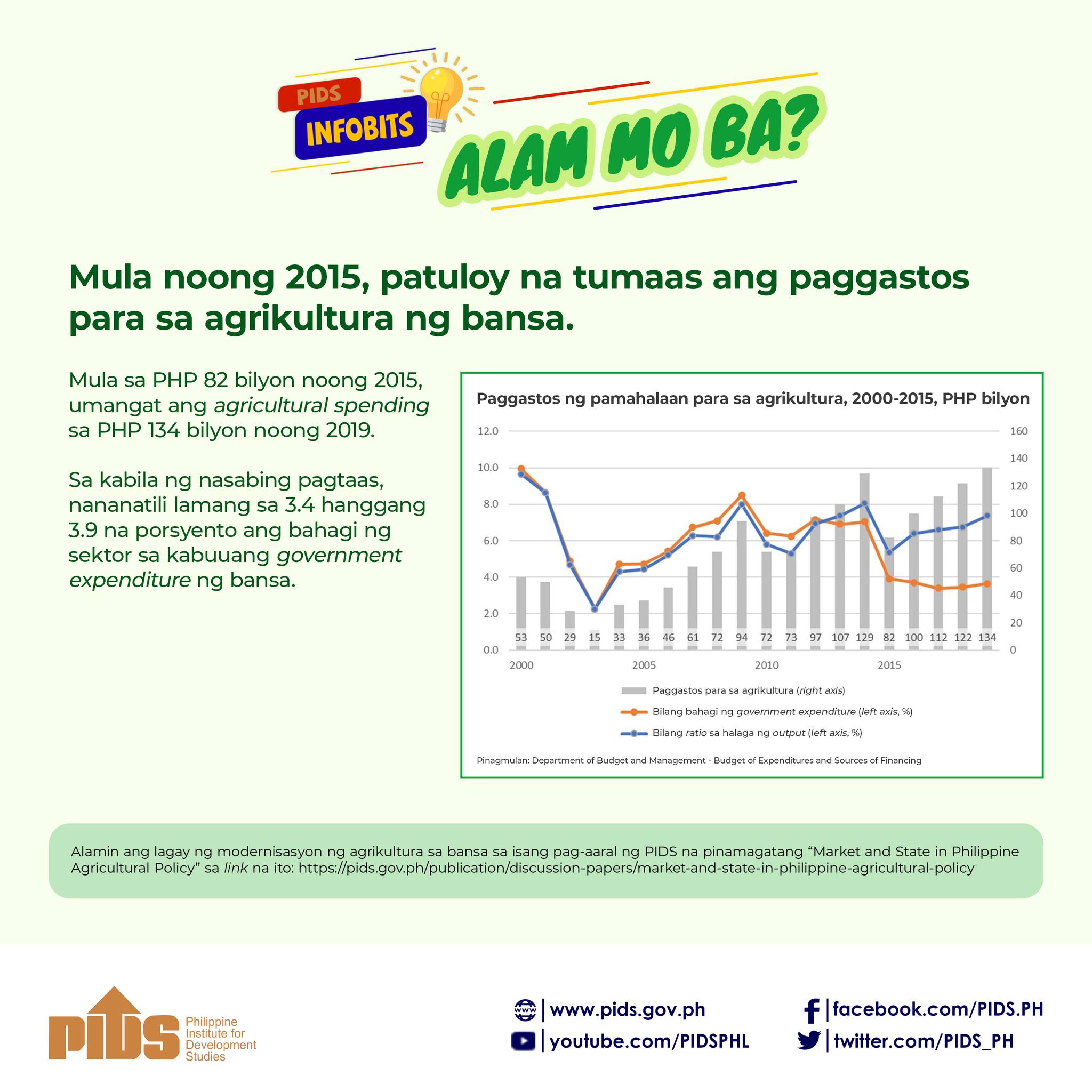The project aims to evaluate the effectiveness and efficiency of the government's irrigation program with focus on the technical, physical, and institutional aspects of performance of communal irrigation systems (CIS).
Using primary and secondary data collection, key-informant interview and focus group discussions with key actors, and walkthroughs to gauge the physical irrigation conditions, the study finds that, among others, majority of the sampled CIS are gravity systems, except in some provinces where there are more pump irrigation systems, coming from lakes, rivers, creeks, springs, runoff, and ground water. While some rivers tapped have adequate flows for irrigation even during the dry seasons, unreliable water supply is a major problem for majority of the CIS that tap water from less dependable water sources, such as small rivers and creeks, or rely on springs and runoff during long dry months. The study suggests that the presence of a dependable surface water source and a good shallow aquifer, as well as the soil type and its suitability to different type of crops, be used as major criteria for irrigation development. On the problem of water supply sources, there should be a concerted and united effort on the part of concerned government agencies and the academe to identify potential sites for diversion dams and storage reservoirs. The Free Irrigation Service Act should also clarify its provisions regarding CIS implementation, among others.


